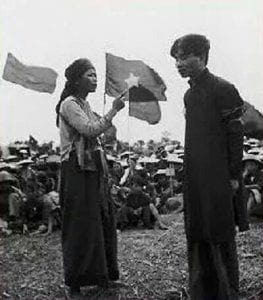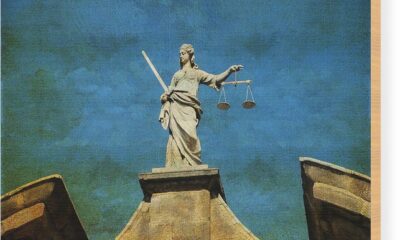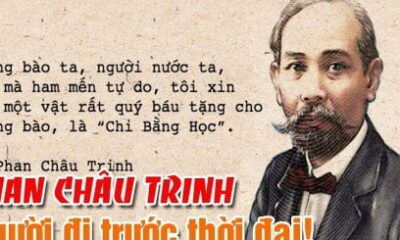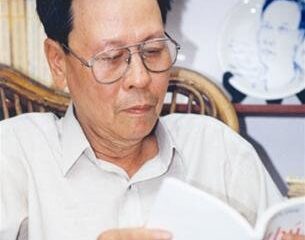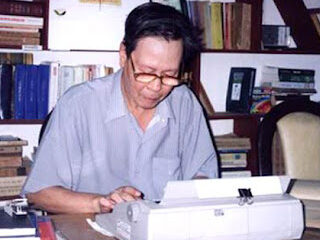Download pdf
Khoi Nguyen
Abstract
This essay traces the transformation of Vietnam’s legal system from an independent judiciary rooted in republican principles (1945–1947) to a state-controlled instrument of class struggle under communist ideology (1948–1953). Initially, the Democratic Republic of Vietnam upheld judicial independence, ensuring checks on executive power and safeguarding individual rights. However, by 1948, ideological shifts led by President Ho Chi Minh and the Communist Party dismantled this framework. Through Decree No. 254 (1948) and subsequent legal reforms, the judiciary was subordinated to the executive branch, effectively merging judicial and administrative functions. The essay highlights critical moments in this transition, including the ideological debates between legal intellectuals and communist leaders, culminating in the full integration of the judiciary into the state apparatus. By 1953, during the land reform campaigns, the judiciary became a tool of class struggle, with untrained peasants acting as judges in temporary courts. This evolution marks the shift from a republican legal system to a socialist legal order, reshaping Vietnam’s legal and political landscape.
Keywords: Vietnam, legal thought, Republicanism
Part 1: Republican Spirit 1946
Part 2: The February 1948 Letter – Law Must “Unite” with Administration
Part 3: The Attack of the Communists
Part 4: Responding to the Ideal of “Independent Judiciary,”
Part 5: Ho Chi Minh’s Legal System after the 1948 Debate
The four preceding articles have outlined the history of legal thought since the August 1945 revolution until mid-1948. During the first three years (1945 to 1947), Vietnam’s legal system was built and operated on the basis of the idea of “independent judiciary”. This independent legal thought and system helped strengthen the Democratic Republic of Vietnam regime amidst the wartime context, operating with the goal of upholding justice, punishing certain officials of the revolutionary government when they abused power to oppress the people or took advantage of the wartime situation for personal vendettas. The judiciary also steadfastly maintained its independent stance from the executive branch, resisting the millennia-old feudal tradition of the judiciary serving as an arm of the ruling elite. However, by February 1948, President Ho Chi Minh directed the judiciary to “unify” with the executive branch, effectively ending its independent status. Just over a month later, Communist members organized ideological attacks against the independent legal system, which President Ho Chi Minh himself had established and enforced since 1946 to build a socialist legal system, wherein the judiciary must obey the executive branch and serve the class struggle. Legal intellectuals countered all arguments of the Communists.
However, despite the fact that the attacks on independent judiciary, both in terms of ideology and practice, by Quang Dam in the “Truth” newspaper could not withstand intellectual criticism from legal professionals, just a few months later, in November 1948, President Ho Chi Minh issued Decree No. 254, dated November 9, 1948, on “Reorganizing the People’s Government during the Resistance War”, granting judicial power to the judiciary.
Decree No. 254, November 9, 1948: Judiciary Replaces Legal System
This decree holds historical significance. If Quang Dam’s opening attack merely signaled a change in the Communist Party of Vietnam’s ideology, this decree marked that change in reality.
Article 22 of this decree grants the Administrative Resistance Committee of the inter-regional administrative districts the power of prosecution equivalent to a court, meaning this administrative body both governs society and adjudicates like the judiciary, akin to the functions of prefects and governors in the feudal regime, acting as both players and referees in a game.
Although this decree pretends to seek input from the Director of Legal Affairs, this pretense shows that the function and authority of the judiciary have been controlled: they are not only no longer independent but are reduced to merely providing opinions, advisory in nature.
Furthermore, Article 23 of this decree allows the inter-regional administrative authority to arrest and restrict people from leaving their residence with only the requirement to “seek the opinion of the district director of legal affairs”. The judiciary no longer has the authority to order the release of unlawfully detained individuals. Every month, the administrative committee will meet with the Director of Legal Affairs to “review” cases of arrest. Thus, the Director of Legal Affairs is officially placed within the administrative structure, grouped with other “departments” such as health, culture… as Quang Dam suggested five months earlier.
This decree, therefore, contradicts Decree No. 40, dated March 29, 1946, signed by President Ho Chi Minh himself, which stipulated that only the judiciary had the authority to issue arrest warrants. The executive branch was only allowed to make arrests without a judicial decision in cases of flagrant offenses but had to transfer the case to the judiciary within 24 hours (Articles 1 and 2).
However, given the wartime circumstances, Decree No. 40 of March 29, 1946 also specified special cases when the administrative authority needed to urgently arrest individuals, related to the struggle for independence. Of course, this decree in 1946 absolutely protected the independence of the judiciary: even in those special cases, the decision on the fate of the defendant belonged to the court. They had the right to overturn the decision of the executive branch and release the defendant (Articles 12 and 14).
Decree 254 of November 9, 1948, in complete contrast to Decree SL-40 in 1946, was signed by President Ho Chi Minh immediately after the attack on independent legal thought and the legal system, despite the fact that the arguments against independent judiciary had been refuted.
Prelude 1948 – 1949
One year after the initial attack, in April 1949, the author “Tân Dân” wrote an article titled “Vietnamese Judiciary – Independent or Not Independent” in the “Reader’s Opinion” section of the “Truth” newspaper (Issue 110, April 25, 1949). “Tân Dân” reiterated the debate and repeated the points made by Quang Đạm, as if these points had never been refuted. Tân Dân acknowledged that the 1946 Constitution stipulated “independent judiciary,” but simply reiterated the points explaining the meaning of the concept of “independence” as Quang Đạm had done. Tân Dân only went further than Quang Đạm in one aspect by explicitly mentioning the Soviet Union: we abolish independent judiciary, placing the judiciary under the control of the executive branch, as that is the progressive path of the Soviet Union.
At the same time, Minister of Justice Vũ Đình Hoè also lost much power within the judiciary system after 1950. Real power in the Ministry of Justice was transferred to Deputy Minister Trần Công Tường, a Communist Party member trained in the Soviet Union. Since early 1948, the Ministry of Justice had been divided into two agencies, A and B. Agency A was led by Minister Vũ Đình Hoè, based in Thái Nguyên. Agency B, led by Deputy Minister Trần Công Tường, was based in Vĩnh Phúc. Campaigns to reform the judiciary to serve class struggles in various disputes, including land disputes, lawsuits, and land reforms, were all carried out by “agency B.”
Socialist Legal System in the Early 1950s
By the year 1950, President Ho Chi Minh officially carried out what Quang Đạm had spoken of in 1948: turning the judiciary (courts) into a tool for class struggle.
“The law is the weapon of a ruling class, used to suppress the class against itself; the old law was the will of French colonialists, not the common will of our people. The old law was established to maintain true social order, but that social order only benefited the feudal colonialists, not the entire people. The primary purpose of the law is to suppress oppression. Feudalists established laws to oppress peasants. Capitalists established laws to oppress workers and the working people. Our law today is the will of the leading working class in the revolution.” (Ho Chi Minh, State and Law, Volume III, Labor Publishing House, 1971, page 138)
Peasant judges try defendants in court following the model of communist judiciary.
By November, President Ho Chi Minh signed Decree No. 158-SL on November 17, 1950, stipulating the inclusion of “successful public officials” into the judge’s profession (Article 1). While in the opening of the attack on independent judiciary, Quang Đạm still acknowledged the judiciary as a profession requiring specialized skills, with this decree, President Ho Chi Minh no longer required judges to be formally trained in law, but rather the standard for becoming a judge was being part of the “public officials” group.
On the same day, he signed Decree No. 156-SL, effective from November 22, 1950, allowing inter-regional administrative agencies to establish inter-regional courts, giving these courts the jurisdiction of military courts (Article 5), which previously only tried “counter-revolutionary” crimes.
With these two decrees, he merged civilian courts into military ones, while also handing over this system to “public officials.”
When the class struggle reached its peak during the land reform, he signed Decree No. 150 SL on April 12, 1953, allowing local administrative authorities to establish “special people’s courts” in areas where land reform was launched. The courts were only temporary, to be dissolved after completing their mission (Article 2). Regarding the composition of the court, the decree stipulated that “half of the judges shall be appointed by the Farmers’ Union or the Farmers’ Congress at the district or inter-district level. When a trial is conducted in a commune, additional farmers from that commune shall be included, but the number of additional representatives shall not exceed one-third of the total number of judges.”
Thus, the judiciary was not only an institution established by the executive branch but also established temporarily, for a short period, solely to execute short-term punitive tasks. Half of the judges were farmers, but when the court came to the locality for trial, additional farmers from that area were added, hence, farmers dominated the judiciary force.
This was the first time such a phenomenon appeared in Vietnamese history. In the feudal era, a district magistrate also served as a judge, but surely all district magistrates had to be educated, passing the state examinations, before being appointed as officials. In the judiciary system designed by President Ho Chi Minh through the aforementioned decrees, essentially imported from the Soviet Union and China, uneducated peasants were recruited to positions deciding the fate, life, and property of others without any formal education.
Moreover, even an uneducated peasant could be recruited to a temporary “court”; after issuing a death sentence, the court would be dissolved, and that peasant would bear no responsibility for the verdict they had pronounced.
Thus, within a span of less than ten years, from 1946 to 1953, the documents related to law and judiciary issued by President Ho Chi Minh could be divided into two contrasting periods. The first period comprised documents following the republican spirit, such as the 1946 Constitution and the initial decrees establishing an independent judiciary and protecting individual freedoms. The second period consisted of decrees following communist ideology imported from China, organizing the judiciary as a tool serving the government, turning uneducated peasants into judges to pronounce verdicts in land reform. The dividing milestone between these two periods was 1948 when a debate erupted within the Democratic Republic of Vietnam government between two paths: communism and republicanism regarding the judiciary.
Conclusion
The history of Vietnam’s legal system from 1945 to 1956 reflects a profound ideological struggle between republicanism and communism, culminating in a complete transformation of the judiciary’s role and function. In the immediate aftermath of the August 1945 Revolution, the Democratic Republic of Vietnam, under President Ho Chi Minh, initially embraced the principle of an independent judiciary rooted in republican ideals. This legal system, enshrined in the 1946 Constitution and early legal decrees, aimed to uphold justice, protect individual rights, and provide checks on executive power—even during wartime.
However, this independent legal framework soon came under attack. The turning point came in 1948 when ideological tensions within the government erupted into public debate. The communists, led by figures like Quang Đạm, rejected the notion of judicial independence, framing the law as a tool for class struggle and an extension of the executive’s authority. Republican legalists, such as Vũ Trọng Khánh and Vũ Đình Hoè, defended the judiciary’s independence, emphasizing its role as a protector of justice above political agendas. Despite their intellectual rigor and constitutional arguments, the tide of history shifted against them.
By late 1948, the ideological debate gave way to decisive legal reforms. President Ho Chi Minh’s Decree No. 254 formally subordinated the judiciary to the executive, stripping it of its independence and paving the way for a socialist legal system. This shift was solidified in the early 1950s through further decrees that merged civilian courts with military tribunals, prioritized class struggle over legal principles, and allowed untrained peasants to serve as judges during land reform campaigns. Courts became temporary instruments of revolutionary justice, designed more for political retribution than for the protection of rights or the impartial application of law.
The transformation of Vietnam’s judiciary from a republican institution into a tool of the socialist state had far-reaching consequences. It eliminated legal safeguards against state abuse, undermined the rule of law, and entrenched the legal system as an instrument of ideological control. The debates of 1948 revealed the deep fault lines within Vietnam’s revolutionary government—between those advocating for democratic legal principles and those committed to a Marxist-Leninist model of governance. Ultimately, the victory of the latter reshaped the legal and political landscape of Vietnam, leaving a legacy that continues to influence the country’s legal system today.
This history underscores a broader truth: legal systems are not merely technical frameworks for dispute resolution but are deeply embedded in the ideological struggles that define nations. Vietnam’s journey from republicanism to communism in its legal thought highlights how law can be both a guardian of justice and a tool of power, depending on the ideological forces that shape it.
References
Sherry Jr, Vincent J. The evolution of the Legal System of the Republic of Vietnam . The University of Southern Mississippi, 1973
Tuan, H. P., Nguyen, C., Nguyen, D. L., Khôi, N. L. H., Nguyen, M. T., Minh, N. T., … & Zinoman, P. B. (2022). Building a republican nation in Vietnam, 1920–1963. University of Hawaii Press.
Nguyen, M. T. (2022). The Self-Reliant Literary Group and Colonial Republicanism in the 1930s. Building a Republican Nation in Vietnam, 1920–1963, 61.
Thuy Nguyen; Exploiting Ideology and Making Higher Education Serve Vietnam’s Authoritarian Regime. Communist and Post-Communist Studies 1 December 2022; 55 (4): 83–104. doi: https://doi.org/10.1525/cpcs.2022.1819231
Zinoman, P. (2013). Vietnamese colonial republican: The political vision of Vu Trong Phung. Univ of California Press.
Vu, Tuong and Nguyen, Thuy. “Chapter 1 “Doi Moi” but Not “Doi Mau”: Vietnam’s Red Crony Capitalism in Historical Perspective”. The Dragon’s Underbelly: Dynamics and Dilemmas in Vietnam’s Economy and Politics, edited by Nhu Truong and Vu Tuong, Singapore: ISEAS Publishing, 2022, pp. 25-50. https://doi.org/10.1355/9789815011401-003
Kim, T. T. (2022). Early Republicans’ Concept of the Nation. Building a Republican Nation in Vietnam, 1920–1963, 43.

 Politics & Economy4 years ago
Politics & Economy4 years ago
 Politics & Economy2 years ago
Politics & Economy2 years ago
 After 19751 year ago
After 19751 year ago
 ARCHIVES5 years ago
ARCHIVES5 years ago
 Society & Culture5 years ago
Society & Culture5 years ago
 Politics & Economy4 years ago
Politics & Economy4 years ago
 Politics & Economy5 years ago
Politics & Economy5 years ago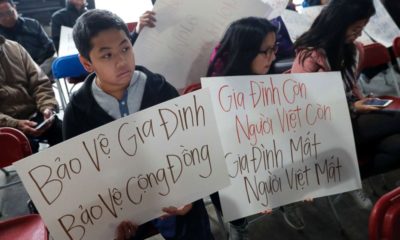
 Vietnamese-America4 years ago
Vietnamese-America4 years ago
